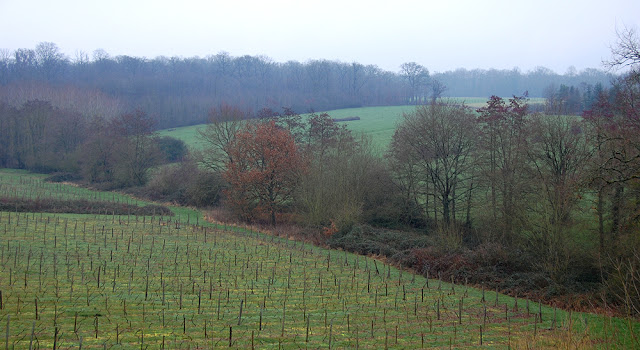Pontigny Abbey is the oldest existing Cistercian monastery in France, founded in 1114. It is exactly how I like churches - simple, bare, flooded with light, deserted and with atmosphere. The white limestone austerity of the interior is only slightly spoiled by the later addition of a dark wood choir screen.
Ferretting through the dilapidated backstreets of Tonnere, you come across the unique marvel of the Fosse Dionne, a vauclusian spring of an amazing turquoise colour. It is surrounded by a circular covered medieval lavoire (fancy French for washhouse) and a bunch of mundane houses. Despite the latter, there is a strangely primal spiritual feeling to the place.
Another 900 year old Cistercian abbey, Fontenay has survived more or less intact partly because it was used in the 1800’s as a paper mill. It was subsequently bought by an art lover and underwent extensive restoration works to “extract it from its industrial slime”. What a picturesque phrase. As a Unesco world heritage site, it now presents magnificently. It seems particularly churlish that some visitors apparently bemoan the entrance price.
The abbey church is a perfect example of the Romanesque Cistercian style. If anything, it is even more austere than Pontigny. Although it would have originally been paved with tiles, the nave has a gravel floor, which is strikingly novel.
The enormous dormitory features a roof of magnificent hand hewn spanish chestnut beams dating from the 15th century. The barrel shape must have produced a particularly sonorous effect with the entire company of the abbey’s monks asleep on their simple pallets.
There does not seem to be a lot to the town of Moneteau except an enormous Yoplait factory, but the locals have made something out of their one bridge over the Yonne, seen here in all its night time glory.
I find covered markets quite fascinating. In Sens, there is a magnificent triangular planform, two tiered, brick and iron and glass example. In many villages we found wonderful bucolic versions. These are not monuments, but still perform their original functions. I find the rustic wooden roof supporting structures quite enchanting.
The mention of “Burgundy” usually brings to mind eating and drinking. In moderation, this was the case for our stay. Our most memorable meal was a lunch at the “Relais Paris Lyon” in Joigny. Although the décor suggested some sort of upmarket burger joint, the food was excellent. Ingrid had unforgettable lamb shanks which had been cooked for 6 hours. My seafood risotto was no less impressive. The coffee was decent also, not always the case in France I’m afraid. We followed this with a welcome wander around the extraordinarily quaint streets of the old town.
On our way home, we stopped in Saint-Dizier, “the Capital of Cast Iron”, for a walk to admire some the work of the artist Hector Guimard, he of the characteristic Paris Metro art nouveau cast iron detailing.
Just outside Montauville in the Meurthe-et-Moselle region, I trudged through the French military cemetery of Petant. A part was dedicated to WWII prisoners of war and deported soldiers. A significant area was given to French muslim soldiers from the ex-colonies killed in WWI. As always, one feels blessed for not having experienced anything like this first hand. The muffled silence afforded by the snow rendered it even more poignant.
For more photos, click here:































